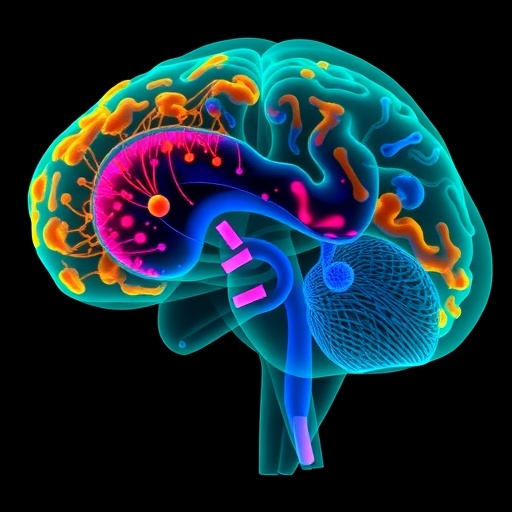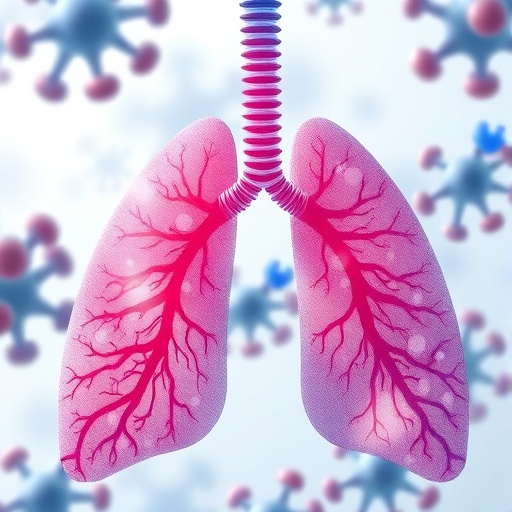In a groundbreaking advance that bridges cutting-edge artificial intelligence with medical imaging, researchers have unveiled a novel deep learning model that promises unprecedented precision in predicting the 1p/19q co-deletion status in lower-grade gliomas (LGGs). This molecular hallmark, intimately linked with the prognosis and therapeutic response of patients, has traditionally required invasive tissue sampling for assessment. The new approach leverages routine MRI radiomics, potentially revolutionizing clinical workflows by providing a non-invasive, rapid, and highly accurate alternative.
Lower-grade gliomas, representing a subset of primary brain tumors, exhibit a complex molecular landscape that dictates their biological behavior and responsiveness to treatment. Among these molecular markers, the co-deletion of chromosomal arms 1p and 19q stands as a critical determinant of favorable prognosis and sensitivity to chemotherapy. Conventional methods to detect this co-deletion rely on surgical biopsy followed by genetic analysis, processes that carry inherent risks and delays. This emerging study, published in BMC Cancer, embarks on a mission to circumvent these limitations by harnessing advanced neuroimaging analytics powered by integrated deep learning.
At the core of the methodology lies an Ensemble Convolutional Neural Network (ECNN), architectured ingeniously to merge the strengths of variational autoencoders (VAE), information gain (IG) techniques, and convolutional neural networks (CNNs). This hybrid architecture is meticulously tuned to extract and distill subtle radiomic features from contrast-enhanced T1-weighted and T2-weighted MRI sequences. The radiomic data, encompassing high-dimensional quantitative imaging descriptors, serve as the substrate for the deep learning model to infer molecular status with remarkable sensitivity.
.adsslot_YqtXQg5nL1{ width:728px !important; height:90px !important; }
@media (max-width:1199px) { .adsslot_YqtXQg5nL1{ width:468px !important; height:60px !important; } }
@media (max-width:767px) { .adsslot_YqtXQg5nL1{ width:320px !important; height:50px !important; } }
ADVERTISEMENT
The retrospective analysis compiled a diverse cohort of 218 patients diagnosed with LGG between 2018 and 2022, amalgamating data from the Cancer Imaging Archive and a regional medical center. Expert neurosurgeons manually delineated tumor regions of interest, ensuring precision in image segmentation pivotal for model training. Such a rich dataset augmented by clinical parameters provided a robust foundation for training and validation, employing fivefold cross-validation to rigorously evaluate model performance.
Encapsulating the fusion of innovation and precision, the ECNN model boasted astounding predictive metrics, with an average precision and recall of approximately 0.98 and an F1-score mirroring this performance. Most impressively, the model’s accuracy reached an average of 98.1%, while the area under the ROC curve (AUC) soared to an exceptional 0.994, unequivocally outperforming traditional machine learning classifiers such as random forests and decision trees whose AUCs languished between 0.523 and 0.702.
The implications of these findings extend far beyond academic interest, holding tangible promise for clinical practice. By providing a rapid and non-invasive diagnostic tool that discerns molecular subtypes with near-perfect accuracy, the ECNN-based model could streamline decision-making processes, mitigate the need for hazardous surgical biopsies, and accelerate the initiation of personalized therapeutic regimens. This confluence of AI-driven radiomics with neuro-oncology heralds a transformative paradigm where imaging transcends structural assessment to reveal intricate molecular underpinnings.
Technically, the utilization of a variational autoencoder within the ensemble allows the model to capture the latent representations of tumor heterogeneity, essentially learning a compressed yet meaningful depiction of the imaging data. Meanwhile, the information gain component prioritizes features that contribute the most to uncertainty reduction, enhancing discriminative power. The convolutional neural network layers adeptly parse spatial hierarchies within the imaging data, rendering the system adept at discerning complex patterns imperceptible to human observation.
Moreover, the comparative analysis against classical machine learning algorithms underscores the superior scalability and adaptability of deep learning frameworks in handling high-dimensional, non-linear data prevalent in radiomic studies. The inferior performance of random forest, decision tree, K-nearest neighbor, and Gaussian naive Bayes algorithms in this context highlights their limitations when confronted with intricate imaging datasets and molecular classification tasks.
Beyond predictive accuracy, the study exemplifies the importance of multidisciplinary collaboration, integrating expertise from medical imaging, machine learning, neurosurgery, and oncology. This synergy is vital in ensuring that advanced computational models are not merely theoretical constructs but practical tools ready for clinical integration. The meticulous manual segmentation by senior neurosurgeons guarantees that the model training is anchored on high-quality, biologically relevant data, a cornerstone in translational AI research.
Looking ahead, the ECNN framework’s modular architecture offers flexibility for incorporation of additional imaging modalities such as diffusion tensor imaging or perfusion MRI, potentially enriching its predictive capacity. Furthermore, expanding the cohort size and embracing prospective studies could cement the model’s generalizability and robustness in diverse patient populations. Integration with electronic health records and workflow systems can facilitate seamless adoption in hospital settings.
Ethical considerations, including algorithm interpretability and validation across demographic groups, remain paramount to ensure equitable healthcare delivery. Transparency in model decision-making pathways and continuous performance monitoring will foster clinician trust and patient acceptance, critical elements for successful deployment.
In summary, this pioneering research elucidates a path where non-invasive imaging coupled with sophisticated deep learning algorithms transcends current limitations in neuro-oncology diagnostics. The confluence of MRI radiomics and ensemble deep learning charts a course toward personalized medicine, enhancing the precision of lower-grade glioma characterization. By predicting 1p/19q co-deletion status with exceptional fidelity, this technological breakthrough promises to redefine how clinicians approach diagnosis and treatment, ultimately improving patient outcomes.
As the medical community increasingly embraces AI-assisted tools, studies like this exemplify the transformative potential when computational power is harnessed thoughtfully and clinically. The fusion of domain expertise with algorithmic innovation heralds a new era where precision medicine is not an aspiration but a rapidly attainable standard. This advancement beckons further exploration and inspires optimism that the future of glioma care will be smarter, safer, and profoundly more effective.
Subject of Research: Prediction of 1p/19q molecular co-deletion status in lower-grade gliomas using integrated deep learning based on MRI radiomics.
Article Title: Prediction of 1p/19q state in glioma by integrated deep learning method based on MRI radiomics.
Article References:
Li, F., Li, Z., Xu, H. et al. Prediction of 1p/19q state in glioma by integrated deep learning method based on MRI radiomics. BMC Cancer 25, 1228 (2025). https://doi.org/10.1186/s12885-025-14454-9
Image Credits: Scienmag.com
DOI: https://doi.org/10.1186/s12885-025-14454-9
Tags: 1p/19q co-deletion status in gliomasadvanced neuroimaging analytics in cancerartificial intelligence in oncologyclinical implications of glioma imaging analyticsdeep learning model for glioma predictionEnsemble Convolutional Neural Network for medical imaginghybrid deep learning techniques in healthcareinnovative approaches to glioma prognosislower-grade gliomas and treatment responsemolecular markers in brain tumorsnon-invasive MRI radiomics for brain tumorsprecision medicine in glioma diagnosis





